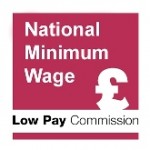Since its introduction in 2016, the National Living Wage (NLW) has increased substantially relative to median pay. But an important question is, what impact has this had on businesses? Have they reduced employment, increased their prices or made other changes to how they operate?
In 2019, we commissioned Frontier Economics to explore these questions and inform our recommendations to the Government. We published their findings alongside our report in December.
The research was split into two parts: one looking at the impact on businesses, and one looking in detail at the impact on prices.
Impact on business performance
So far, research has shown little evidence of employment losses due to increases in the NLW. The first part of Frontier’s project builds on previous work by using the Business Structure Database (BSD), which makes it possible to look at the impact of the minimum wage on employment growth, as well as other impacts such as business creation and destruction, in a much broader sample of firms than can be found in many other datasets.
The researchers conducted a ‘difference-in-difference' analysis to investigate the change in performance over time in firms that use the minimum wage (‘the treatment group’) and other businesses (‘the control group’), comparing a period before the introduction of the NLW to a period 3 years later. Minimum wage firms were identified based on the pay of employees in the Annual Survey of Hours and Earnings (ASHE), which is a 1 per cent random sample of all UK employees. If the hourly pay of an individual was below the incoming minimum wage, their firm was placed in the treatment group; if the pay was greater than 120 per cent of the new minimum wage, their firm was placed in the control group.
Controlling for other firm characteristics, employment growth over the three years considered was around 2 to 3 percentage points lower in firms that pay the minimum wage. This was largely driven by retail and food service chains. However, this effect was also seen before the introduction of the NLW in 2016. The way to interpret this is that these firms have made general changes to reduce labour costs over a longer period (for example, by introducing self-service checkouts and moving some of their services online), and their slower employment growth cannot be directly attributed to the higher minimum wage.
Impact on prices
In our conversations with stakeholders, businesses commonly report raising prices as a way of dealing with increases in the NLW. Employer surveys indicate that around one in three small businesses affected by the minimum wage tend to raise prices in response to the rising wage floor. However, we have so far had fairly limited empirical evidence on the relationship between increases in the minimum wage and prices.
To explore this relationship, data from ASHE and the Annual Business Survey (ABS) were used to identify sector and region combinations that are more or less likely to be exposed to increases in the minimum wage, based on the share of employees earning less than the incoming wage and the cost of employment as a proportion of total turnover. The researchers then mapped these to monthly consumer price quotes covering 700 items in the region.
Using a panel model, the research found that exposed firms raised prices more in months when the minimum wage was increased. However, this is a relatively small effect relative to the size of the uplift: inflation of exposed items is between 0.1 and 0.6 percentage points higher, with larger effects since the introduction of the NLW in 2016. The ‘elasticity’ of the minimum wage with respect to prices is between 0.023 and 0.11, meaning that a 10 per cent increase in the minimum wage could increase prices of affected goods and services by up to 1.1 per cent. Because this only applies to a small subset of items and regions, minimum wages have a negligible impact on overall measures of inflation.
Conclusion
Overall, this shows that although the NLW has raised pay for many workers, there have not been large knock-on effects on businesses or on consumers. While employment growth is slower in businesses that are more likely to pay the minimum wage, this is part of a longer-term trend and cannot be interpreted as a direct result of increases in the wage floor. And while there is evidence that prices rise in the months that the minimum wage is increased, this is a relatively small effect.
This is key new evidence that shows the increases in the NLW that we have recommended up to 2020 have not had significant adverse outcomes. Going forwards, it will be even more important to understand how firms are managing and how they may respond to further increases. We will continue to build on this evidence through our research programme and conversations with businesses themselves.
